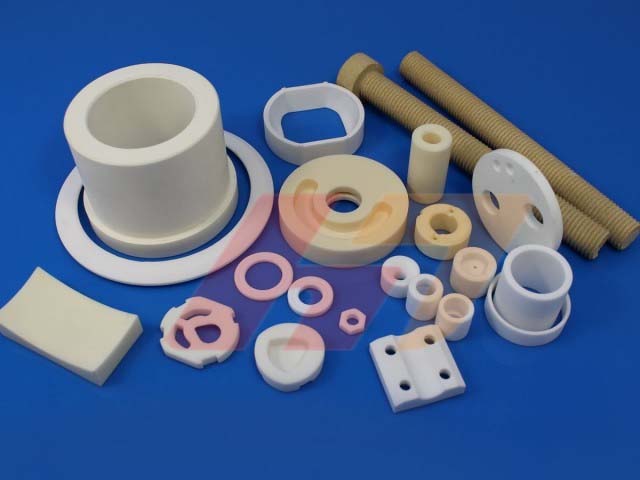-
Telephone:+0086-371-6376-8262Telephone:+0086-371-6376-8385
-
wechat:abcdefg
-
-
Email:ht@ovenfurnace.com

The molecular weight of alumina is 102, and its chemical formula is Al2O3. This is a widely used material, and the main raw material of alumina ceramics is alumina. The melting point of alumina is 2100℃, which gives alumina ceramics excellent high-temperature stability! Therefore, alumina ceramics can be used in various high-temperature industries, and are often made into high-temperature furnace tubes, heating elements, thermocouple protection tubes, etc.
In addition to thermal stability, alumina also has excellent electrical insulation, which makes alumina ceramics widely used in some electrical equipment, the most common of which is ceramic substrates, insulators and other components in the semiconductor industry.
The hardness of alumina is comparable to that of diamond, and it is a very hard material, which gives alumina ceramics excellent wear resistance. Combined with chemical inertness, alumina ceramics can be used in harsh high-intensity environments as well as in easily corrosive environments, and are excellent materials!
Alumina ceramics of different purity
HengTong can provide you with alumina ceramics of various purity levels. Common alumina purity grades include: 88-90% alumina, 92% alumina, 95% alumina, 96% alumina, 99% alumina, 99.7% alumina and 99.95% alumina.

Common products:
Heat shields, wear-resistant plates, high-temperature electrical insulators, insulators, electronic components and substrates, semiconductor components, bearings, seals, water valves, valve cores, ceramic nozzles, thermocouple tubes, wear-resistant parts.
Aluminum oxide mechanical properties
Property | Unit | AL2O3 99.7 | AL2O3 99.5 | AL2O3 99 | AL2O3 95 |
Purity | — | 99.7% | 99.5% | 99% | 95% |
Density | g/cm3 | 3.92 | 3.9 | 3.8 | 3.7 |
Bending Strength | MPa | 375 | 370 | 340 | 304 |
Compressive Strength | MPa | 2450 | 2300 | 2250 | 1910 |
Elastic Modulus | GPa | 380 | 370 | 330 | 330 |
Fracture Toughness | MPam1/2 | 4.5 | 4.3 | 4.2 | 3.8 |
Hardness | HRA | 91 | 91 | 90 | 89 |
Vickers Hardness | HV1 | 1600 | 1550 | 1450 | 1400 |
Thermal Expansion Coefficient | 10- 6 K-1 | 7.8 | 7.8 | 7.7 | 7.5 |
Thermal Conductivity | W/mk | 32 | 32 | 25 | 25 |
Thermal Shock Stability | △T.℃ | 220 | 220 | 200 | 200 |
Maximum Operating Temperature | ℃ | 1750 | 1750 | 1700 | 1500 |
Volume resistance at 20℃ | Ω·cm | 1015 | 1015 | 1014 | 1014 |
Dielectric Strength | KV/mm | 22 | 20 | 16 | 15 |
Dielectric Constant (room temperature) | / | 10 | 11 | 11.5 | 11 |
MHz Dielectric Loss Factor | tan δ | 1×10-3 | 1×10-3 | 3×10-3 | 3×10-3 |
Alumina physical properties
Name | Alumina | |||
Purity | 99.95% | 99.7% | 99% | 95% |
Thermal expansion coefficient (25°C-800°C) | 7.5-9.5 | 8.2-10.2 | 8.0-9.8 | 8.5-10.5 |
Thermal expansion coefficient (25°C-300°C) | 6.5-8.0 | 7.2-8.7 | 7.0-8.5 | 7.5-9.0 |
Maximum stable working temperature | 1750 | 1700 | 1500 | 1500 |
Thermal conductivity (normal temperature 25°C) | 45 | 30 | 20 | 15 |
Thermal conductivity (high temperature 1000°C) | 30 | 20 | 15 | 10 |
Dielectric constant | 10 | 9 | 8 | 7 |
Resistivity (25°C) | >1014 | >1014 | >1014 | >1014 |